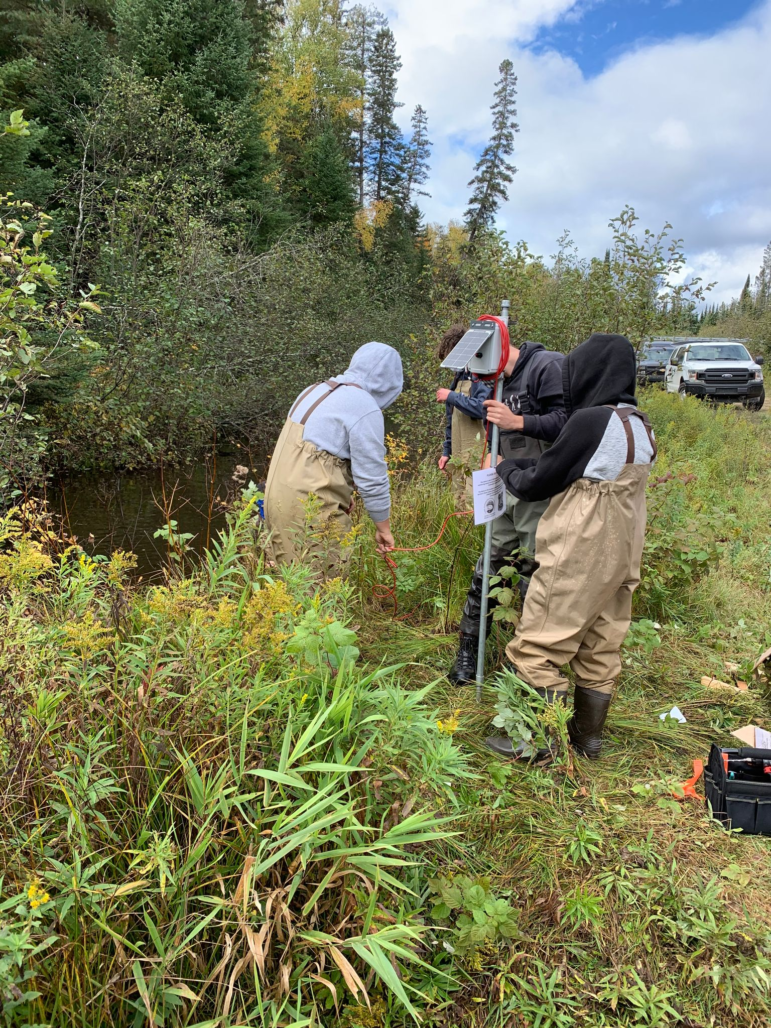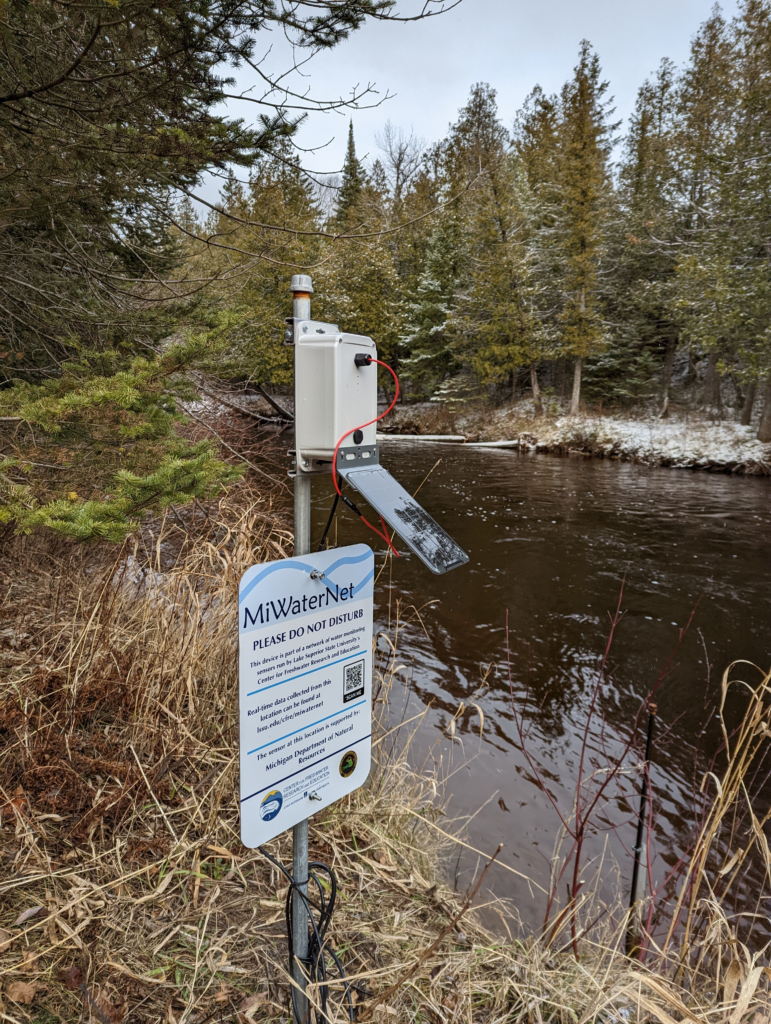
By NICOLINE BRADFORD
Capital News Service
LANSING – A water monitoring system powered by citizen scientists is providing real-time data for researchers across Northern Michigan.
The system, called MiWaterNet, is important because it constantly measures the quality of small streams.
“Small streams are often considered the sentinels of the watershed,” said Ashley Moerke, the director of the Center for Freshwater Research and Education at Lake Superior State University and creator of the MiWaterNet program. “They are very responsive to changes in the environment.”
The real-time data helps researchers answer important questions about a watershed’s condition.
“For example, if we’re studying how climate change is affecting the stream ecosystem, we would need data that is taken at a high frequency,” Moerke said.
Without constant monitoring, scientists can’t get the full picture.
Most stream monitoring takes place a few times each year and doesn’t capture the changes occurring over long periods. MiWaterNet measures them constantly.
The researchers were inspired by the U.S. Geological Survey’s stream gauging network, said Drew Heckman, a research technician for the MiWaterNet program and the university center. This network provides valuable, real-time data on a stream’s water quality, level and temperature.
However, the sensors are extremely expensive to maintain and tend to focus on large rivers, Heckman said. Many have become inactive and not been replaced.
Keeping the cost low is MiWaterNet’s focus, Heckman said. “Technology has come so far. What was cutting-edge 10 years ago is now available to consumers for a much lower price.”
The researchers were also able to cut the cost significantly by doing some coding and wiring themselves.
Even high schoolers got involved.
One of the most rewarding parts of running the program has been the opportunity to integrate citizen science, Heckman said.
Through a K-12 educational program with the National Oceanic and Atmospheric Administration, the researchers worked with schools across Northern Michigan, including Les Cheneaux Community Schools, Brimley Area Schools and Pickford Public Schools.
Heckman and his team brought science to the classroom. He worked with the students to assemble the monitoring stations and then deploy them in streams near the schools, providing the students with real-time data.
That gave them a local connection and got them excited about citizen science, he said.
The program has grown beyond the initial goals of collecting data, Heckman said.
The data has already contributed to understanding stream pollution, which students have presented to city councils, he said.
His favorite parts are the questions that come after the students deploy the sensors, Heckman said. They start thinking about the bigger picture and making connections.
Since 2018, 26 sensors have been deployed with funding and collaboration from various groups, including the Department of Natural Resources, the U.S. Forest Service and Anglers of the Au Sable, according to the Center for Freshwater Research.
Moerke said that the variety of stakeholders makes the program unique, with federal, state and local communities involved indifferent aspects.
“These broad stakeholders demonstrate how good the program is at integrating science, technology and education,” she said.
Nicoline Bradford reports for Great Lakes Echo.

Drew Heckman
A sensor cable runs from the solar-powered controller of a monitoring station into the Carp River near Negaunee.